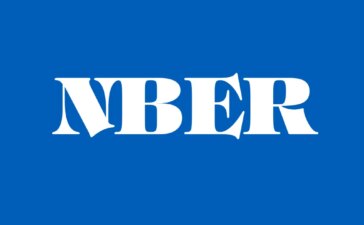Are you living paycheque to paycheque, struggling to keep up with rising costs, or dealing with fluctuating income? Making a budget, or what’s more, sticking to it may seem impossible when you are in these situations. Even those with steady or high incomes may struggle to budget, so don’t give up just yet. You can master budgeting and begin saving and investing towards your financial goals. As part of your 2025 financial reset, now is a great time to embrace and/or rethink personal budgeting, especially if managing your expenses feel like an uphill battle.
What is a budget?
A budget is a written document that is crafted to help you allocate your income each month. It helps you track how much money you make and how you will spend it. Knowing that you have a good budget to fall back on each month will give you confidence and peace of mind, knowing you’re in control of your money. It helps you to stay on top of your money by allowing you to reconcile what you actually spend with what you plan to spend in your budget and see where you are going off track. With all the benefits of budgeting, how do you create one? Let’s explore a few approaches to budgeting to help you find one that works for you by looking at three budgeting methods:
How should I go about budgeting?
• The 50/30/20 plan is the budget type most people are familiar with as it is fairly straightforward. It recommends that roughly 20 per cent of your income go towards savings and paying down debt, 30 per cent should be allocated to wants and non-essential items, like entertainment, vacations, and things of that nature, and 50 per cent of your income should be spent on your needs, like mortgage or rent, transportation costs, groceries, etc. It works for many people because of the variety of incomes that it can successfully service. This budgeting method is a great option for some newbie budgeters because it doesn’t require meticulous tracking of all your expenses. You can succeed with this budget if you know what counts as a want versus a need and are motivated to set aside enough money toward savings and debt.
However, the main drawback is that the 50/30/20 rule might be unrealistic for people with significant debt or high savings and investment goals because 20 per cent of your income might not stretch far enough. But you can customise the 50/30/20 budget to fit your specific circumstances. For example, change it to 50/15/35 if you want to save more, or work to reduce debt faster by decreasing the amount spent on discretionary expenses.
• There is also the reverse budget method, also known as the pay yourself first method. When you pay yourself first, you first take out at least 10 per cent – 20 per cent of your income and put that money towards saving and investing before spending on anything else, whether monthly necessities or discretionary spending. This method is largely geared towards savings-focused people intent on achieving financial goals. However, it may not be practical for those earning unpredictable incomes because they may not earn enough to save 10-20 per cent before covering their expenses.
If this is your situation, try to at least put aside a small amount each month to build the habit of saving and investing. This habit will be beneficial when you are earning more because you already have the discipline so you can increase the amount you invest when your income becomes higher, for example, through a promotion. You can also do a lump sum payment in peak income periods or when you get a windfall.
• The traditional budgeting method is a structured approach to managing your finances that prioritises detailed planning and categorisation. With this method, you create a comprehensive monthly budget by allocating every dollar of your income toward specific categories, such as essential expenses, discretionary spending, savings, and investments. This method ensures you maintain control over your finances by providing a clear roadmap for spending and investing. The traditional budgeting method starts with identifying your net income and listing all your expenses, dividing them into fixed (eg, rent, utilities) and variable (eg, groceries, entertainment) categories. Every dollar is assigned a purpose. You track your actual spending regularly relative to your budget. This meticulous process helps avoid overspending and ensures funds are consistently allocated toward financial goals, such as building an emergency fund or paying down debt. Tools like budgeting apps, spreadsheets, or even pen-and-paper methods can be used to record and compare actual expenses with your planned budget. Adjustments can then be made as necessary, helping you stay aligned with your financial objectives. The traditional budgeting method also encourages disciplined saving by setting specific targets for goals. To make saving and investing easier it is best to set up automated transfers or standing orders if using this budgeting approach. By setting up recurring transfers from your checking to your savings account or from your saving account to your investment account, you can meet financial goals effortlessly. While this approach may feel restrictive compared to more flexible methods, it provides clarity, accountability, and a sense of control over your finances. For individuals who prefer predictability and precision and are disciplined, the traditional budgeting method remains a reliable way to help you manage your money and meet long-term financial goals.
However, a notable drawback of the traditional budgeting method is its reliance on discipline and its time-consuming and rigid nature. Creating a detailed budget and sticking to it required discipline, as such this method can feel overwhelming, especially for the initial set up and ongoing reconciliations of your actual versus budgeted spending on each category. Therefore, this method may not be appropriate for those who lack the discipline to commit to it.
Budgeting is not a one-size-fits-all solution. The key to financial success lies in finding a method that works for your unique situation and goals. Whether you prefer the structured 50/30/20 approach, the savings-first reverse budget, or the traditional budgeting method, each method has its strengths and can be tailored to suit your needs. So, if one approach isn’t working, don’t hesitate to try another. Budgeting is a skill that takes practice, but its rewards — financial stability and progress toward your goals — are well worth the effort. Think of it as your roadmap to financial success — without it, progress becomes guesswork. As Benjamin Franklin said, “If you fail to plan, you are planning to fail.” Make this the year you master your budget and take charge of your financial future.
Kimberley Martin – Assistant Vice-President, Corporate Solutions, NCB Capital Markets Limited Paul Mullings
















